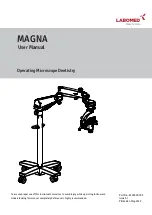
SonixMDP/SP/OP Service Manual 00.053.101, Revision C
Chapter 3: System Installation
3-3
3.1.3
Electrostatic Discharge
During normal operation, the presence of electrostatic discharge (ESD) can cause system reliability issues. The
following are the most common causes for ESD:
• moving people
• low humidity
• improper grounding
• unshielded cable
• poor connection
• moving machines.
ESD is most likely to occur during periods of low humidity. If the relative humidity is below 50%, static charges can
easily accumulate. ESD generally does not occur when the humidity is above 50%. Any time the charge reaches
approximately 10,000 volts, it is likely to discharge to grounded metal parts.
Although ESD will not hurt humans, it can damage certain electronic devices. The high-voltage pulse can burn out
the inputs of many integrated circuit (IC) devices. This damage might not appear instantly, but it can build up over
time, eventually causing the device to fail.
To prevent damage to the system, use ESD minimizing devices where needed. These devices include: anti-static
mats, humidifiers, and spray. Proper discharge is required before handling any electronic device such as an ESD
strap.
3.1.4
Electromagnetic and Radio Frequency Interference
This equipment has been tested and found to comply with the EMC limits for EN 55011, Group 1, Class A and EN
60601-1-2. These limits are designed to provide reasonable protection against harmful interference in a typical
medical installation. The equipment generates, uses and can radiate radio frequency (RF) energy and if not
installed and used in accordance with these instructions, may cause harmful interference to other devices in the
vicinity. However, there is no guarantee that interference will not occur in a particular installation. If this equipment
does cause harmful interference with other devices (which can be determined by turning the equipment off and on)
the user is encouraged to try to correct the interference with one or more of the following measures:
• reorient or relocate the receiving device
• increase separation distance between equipment
• connect the equipment to an outlet on a circuit different to that which the other device(s) is connected
• consult the manufacturer or field service technician for help.
Warning:
The system should not be used adjacent to or stacked with other equipment. If adjacent or stacked use
is necessary, the system should be observed in order to verify normal operation in the configuration in which it
will be used.
Summary of Contents for SonixMDP
Page 1: ...SonixMDP SP OP Ultrasound System Service Manual...
Page 2: ......
Page 4: ......
Page 10: ...Table of Contents 00 053 101 Revision C SonixMDP SP OP Service Manual vi...
Page 12: ...List of Service Drawings 00 053 101 Revision C SonixMDP SP OP Service Manual ii...
Page 44: ...Chapter 4 Performance Testing 00 053 101 Revision C SonixMDP SP OP Service Manual 4 4...
Page 48: ...Chapter 5 Software 00 053 101 Revision C SonixMDP SP OP Service Manual 5 4...
Page 124: ...Chapter 9 Network Configuration 00 053 101 Revision C SonixMDP SP OP Service Manual 9 8...
Page 142: ...Chapter 11 Maintenance 00 053 101 Revision C SonixMDP SP OP Service Manual 11 16...
Page 150: ...Chapter 12 Troubleshooting Issues 00 053 101 Revision C SonixMDP SP OP Service Manual 12 8...
Page 166: ...Appendix C Ultrasonix Limited Warranty 00 053 101 Revision C SonixMDP SP OP Service Manual C 2...
Page 168: ...Appendix D Service Drawings 00 053 101 Revision C SonixMDP SP OP Service Manual D 2...
















































